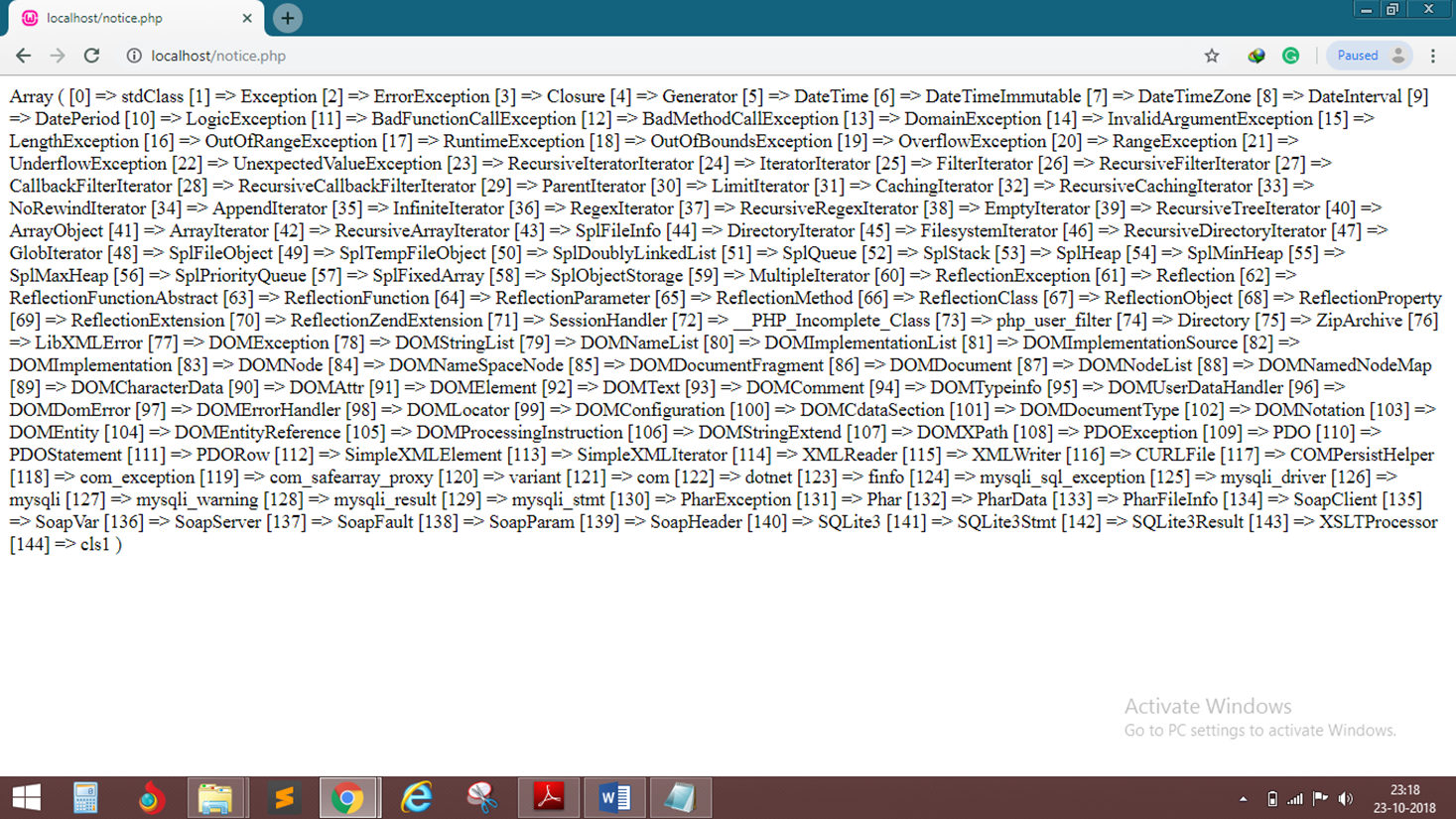PHP Tutorial
- PHP Tutorial
- Install PHP
- PHP Code
- PHP Echo and print
- PHP Variable
- PHP Variable Scope
- PHP $ and $$
- PHP Constants
- PHP Data Types
- PHP Operators
- PHP Comments
Control Statement
- PHP If else
- PHP Switch
- PHP For Loop
- PHP foreach loop
- PHP While Loop
- PHP Do While Loop
- PHP Break
- PHP Continue
PHP Functions
- PHP Functions
- Parameterized Function
- PHP Call By Value and reference
- PHP Default Arguments
- PHP Variable Arguments
- PHP Recursive Function
PHP Arrays
PHP Strings
PHP Math
PHP Form
PHP Include
State Management
PHP File
Upload Download
PHP OOPs Concepts
- OOPs Concepts
- OOPs Abstract Class
- OOPs Abstraction
- OOPs Access Specifiers
- OOPs Const Keyword
- OOPs Constructor and destructor
- Encapsulation
- Final Keyword
- OOPs Functions
- OOPs Inheritance
- OOPs Interface
- OOPs Overloading
- OOPs Type Hinting
PHP MySQLi
- MySQLi CONNECT
- MySQLi CREATE DB
- MySQLi CREATE Table
- MySQLi INSERT
- MySQLi UPDATE
- MySQLi DELETE
- MySQLi SELECT
- MySQLi Order by
PHP Topics
- Compound Types
- is_null() Function
- Special Types
- Inheritance Task
- Special Types
- MVC Architecture
- PHP vs. JavaScript
- PHP vs. HTML
- PHP vs. Node.js
- PHP vs Python
- PHP PDO
- Top 10 PHP frameworks
- phpMyAdmin
- Count All Array Elements
- Create Newline
- Get Current Page URL
PHP Mail
PHP mail() function is used to send email in PHP. You can send text message, html message and attachment with message using PHP mail() function.
PHP mail() function
Syntax
- bool mail ( string $to , string $subject , string $message [, string $additional_headers [, string $additional_parameters ]] )
$to: specifies receiver or receivers of the mail. The receiver must be specified one of the following forms.
- user@example.com
- user@example.com, anotheruser@example.com
- User <user@example.com>
- User <user@example.com>, Another User <anotheruser@example.com>
$subject: represents subject of the mail.
$message: represents message of the mail to be sent.
Note: Each line of the message should be separated with a CRLF ( \r\n ) and lines should not be larger than 70 characters.
$additional_headers (optional): specifies the additional headers such as From, CC, BCC etc. Extra additional headers should also be separated with CRLF ( \r\n ).
PHP Mail Example
<?php
ini_set("sendmail_from", "sonoojaiswal@javatpoint.com");
$to = "sonoojaiswal1987@gmail.com";//change receiver address
$subject = "This is subject";
$message = "This is simple text message.";
$header = "From:sonoojaiswal@javatpoint.com \r\n";
$result = mail ($to,$subject,$message,$header);
if( $result == true ){
echo "Message sent successfully...";
}else{
echo "Sorry, unable to send mail...";
}
?>
If you run this code on the live server, it will send an email to the specified receiver.
PHP Mail: Send HTML Message
To send HTML message, you need to mention Content-type text/html in the message header.
<?php
$to = "abc@example.com";//change receiver address
$subject = "This is subject";
$message = "<h1>This is HTML heading</h1>";
$header = "From:xyz@example.com \r\n";
$header .= "MIME-Version: 1.0 \r\n";
$header .= "Content-type: text/html;charset=UTF-8 \r\n";
$result = mail ($to,$subject,$message,$header);
if( $result == true ){
echo "Message sent successfully...";
}else{
echo "Sorry, unable to send mail...";
}
?>
PHP Mail: Send Mail with Attachment
To send message with attachment, you need to mention many header information which is used in the example given below.
<?php
$to = "abc@example.com";
$subject = "This is subject";
$message = "This is a text message.";
# Open a file
$file = fopen("/tmp/test.txt", "r" );//change your file location
if( $file == false )
{
echo "Error in opening file";
exit();
}
# Read the file into a variable
$size = filesize("/tmp/test.txt");
$content = fread( $file, $size);
# encode the data for safe transit
# and insert \r\n after every 76 chars.
$encoded_content = chunk_split( base64_encode($content));
# Get a random 32 bit number using time() as seed.
$num = md5( time() );
# Define the main headers.
$header = "From:xyz@example.com\r\n";
$header .= "MIME-Version: 1.0\r\n";
$header .= "Content-Type: multipart/mixed; ";
$header .= "boundary=$num\r\n";
$header .= "--$num\r\n";
# Define the message section
$header .= "Content-Type: text/plain\r\n";
$header .= "Content-Transfer-Encoding:8bit\r\n\n";
$header .= "$message\r\n";
$header .= "--$num\r\n";
# Define the attachment section
$header .= "Content-Type: multipart/mixed; ";
$header .= "name=\"test.txt\"\r\n";
$header .= "Content-Transfer-Encoding:base64\r\n";
$header .= "Content-Disposition:attachment; ";
$header .= "filename=\"test.txt\"\r\n\n";
$header .= "$encoded_content\r\n";
$header .= "--$num--";
# Send email now
$result = mail ( $to, $subject, "", $header );
if( $result == true ){
echo "Message sent successfully...";
}else{
echo "Sorry, unable to send mail...";
}
?>


